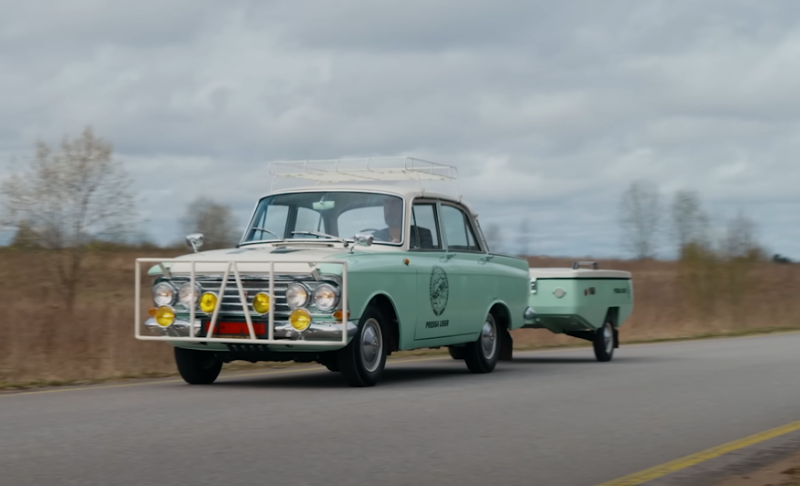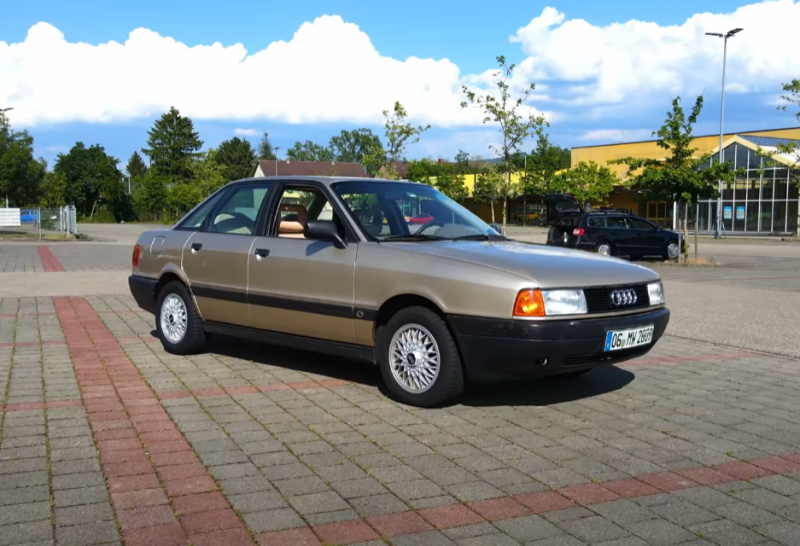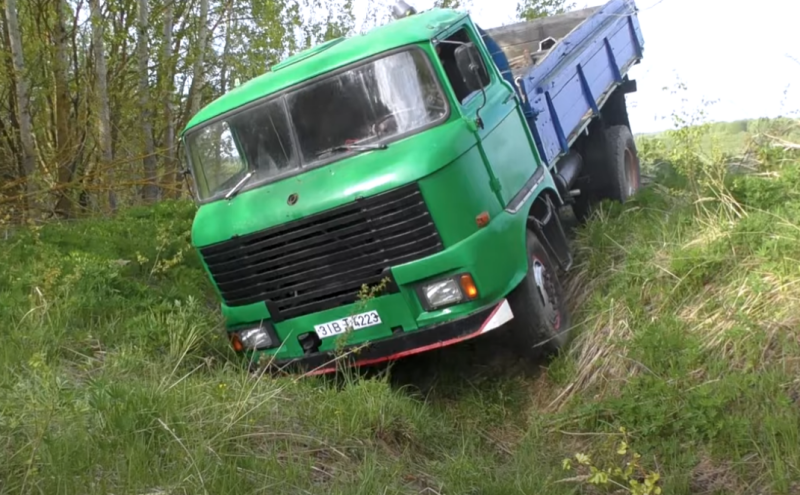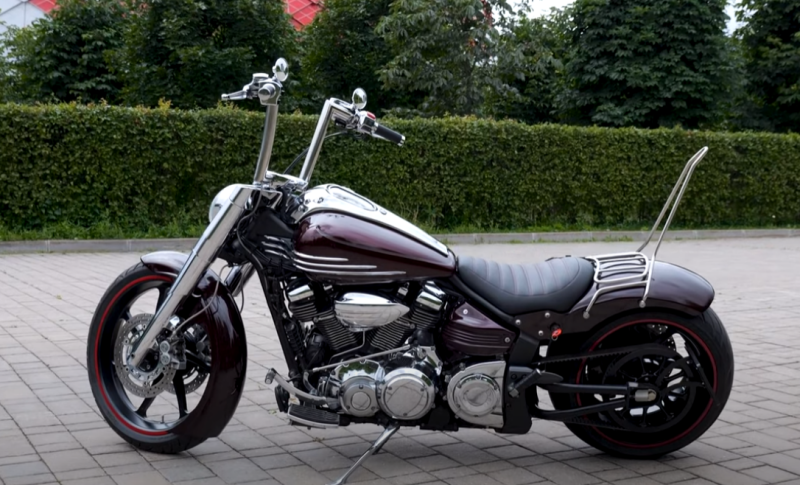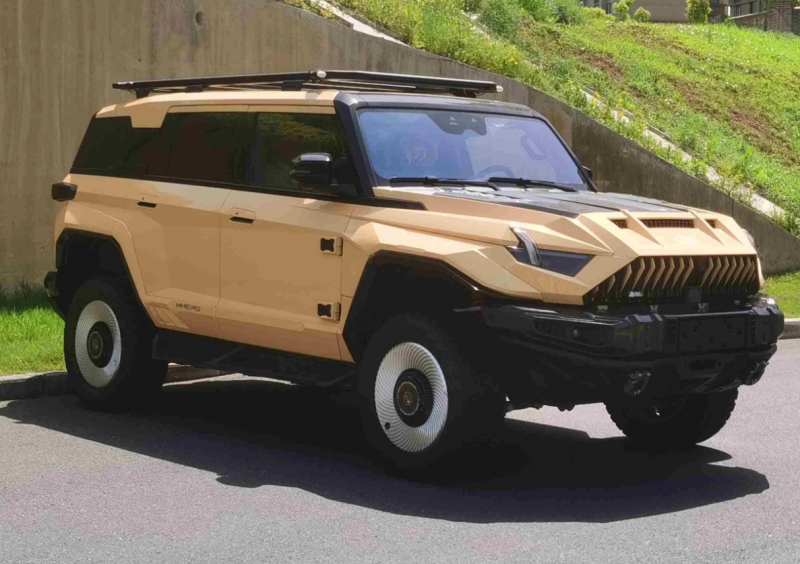But 20 years before that, "Muscovites" were in high demand in the capitalist European countries. It was hard to believe, but about half of the cars of this brand were exported for foreign currency.
Moskvich-408 became the main engine of foreign trade. This beautiful subcompact car still attracts attention with its stylish body contours.
 And it turned out to be a beautiful car! Photo: Youtube.com
And it turned out to be a beautiful car! Photo: Youtube.comIn order for the car to be in demand abroad, it was even subjected to a crash test - the first Soviet passenger car, by the way. Today our story is about this model.
History
Work on the third-generation Moskvich started in 1959. The car was conceived updated not only externally, but also technically. It is interesting that the design features were introduced on the Moskvich-403 - this is a transitional model from the second generation.
Artists and engineers immediately set their sights on the versatility of the platform. The third generation car was supposed to be produced in several body types:
✅ Sedan
✅ Universal
✅ Coupe
✅ Convertible
✅ Delivery van
The first four experimental cars were ready by 1963. All of them differed in different body design. A little later, pre-production Moskvich-408 appeared. They hit the conveyor in 1964.
 Transitional Moskvich-403. Photo: Youtube.com
Transitional Moskvich-403. Photo: Youtube.comDespite the novelty of the generation, some of the technical solutions had to be transferred from the 407 model. MZMA did not have the same funding as GAZ, and even that did not create its own cars from scratch.
Upgrades
For the entire time of production, and this is from 1964 to 1975, Moskvich-408 was constantly being improved. But there were only three global restylings. In 1969, the car received only external changes - new optics, a radiator grille and many minor improvements. The main principle of modernization was not even to improve the design, but to reduce the cost of production.
In 1971 Moskvich-408 received a new dashboard. Outwardly, it can immediately be distinguished by a solid plastic overlay.
 The interior of the car is simple and budget. Photo: Youtube.com
The interior of the car is simple and budget. Photo: Youtube.comThe last major restyling took place in 1973. Moskvich-408 received an improved gear lever. It became floor, and before that it was located on the steering column. All other upgrades were insignificant, although the car changed constantly.
Forgotten Model
Moskvich-408 was discontinued in 1975. But the history of the model did not end there. Now few people remember Moskvich-2138. This is a fairly rare model, if only because it was produced for only 6 years. Years of production - 1976-1982.
 Moskvich-2138. Photo: Youtube.com
Moskvich-2138. Photo: Youtube.comThe appearance of this model is associated with a shortage of more powerful and modern engines installed on 2140. Old engines with a power of 2138 hp were installed on Moskvich-50. With. Recall that the UZAM-412 already produced 75 hp. With.
Appearance and interior
For the mid-1960s, the design of Moskvich-408 was advanced. Unlike the second generation, the car has become similar to a typical European model. This is one of the components of the car's success abroad. Although, the main reason for the popularity of "Moskvich" among foreigners is the victory in rally raids, and then in races. Plus, the low price also played a role.
Despite following the trends of European designers, Moskvich-408 turned out to be quite a bright and original car. His appearance is still recognizable. Although the class Moskvich-408 is no different from the model with the index 407, it looks larger.
 Not enough space in the back. Photo: Youtube.com
Not enough space in the back. Photo: Youtube.comBody parts differed in the complexity of shapes and the thickness of the metal. This gave additional rigidity, and the car was more resistant to rust. The car, of course, rusted, but a lot of time passed before the appearance of through corrosion.
Export copies were especially resistant - their paintwork was definitely thicker. By the way, they still had a lot of chrome elements and four headlights in front, but the latter was far from always.
Moskvich-408 is a fairly cramped car. Although, if you compare it with the previous model, the space has definitely increased. At the back, three people could fit on the sofa, despite the wheel arches protruding into the cabin. Even in European magazines of the 60s they wrote that the Moskvich-408 was spacious for a small car.
The interior of the car was not luxurious - bare metal, upholstery of seats and door cards with leatherette. There was little plastic, but in the process of modernization it was added. First, the dashboard received lining, then the body pillars. The front seat was originally a one-piece sofa, in 1968 it was replaced with separate chairs.
 Refurbished copies are expensive. Photo: Youtube.com
Refurbished copies are expensive. Photo: Youtube.comThe main disadvantages of the Moskvich-408 were low safety in case of an accident, more precisely, Soviet designers almost did not deal with these issues. But we must pay tribute to the engineers, they constantly improved the car. I had to do this - otherwise cars would be worse bought in Western Europe.
Technical features
The Moskvich-408 motor was inherited from the previous generation. Although it is called MZMA-408, it does not differ much from the M-407 structurally. The first thing that catches your eye is the increase in power from 45 to 50 hp. With.
If you understand, then in fact, this is still the same “ancient” engine from the Opel Kadett model of 1938, which has undergone a series of upgrades.
The main differences between MZMA-408 and German:
✅ Increased working volume
✅ Aluminum cylinder head
✅ Valves moved up
✅ Power 50 HP With. In export versions, even 60 liters. With.
The new engine received a modern K-126 carburetor, which the M-407 did not have. The MZMA-408 motor was distinguished by better traction at low and medium speeds. But the Moskvich did not have accelerating dynamics, but the engine was easy to maintain and repair.
 The Moskvich-408 engine is easy to maintain. Photo: Youtube.com
The Moskvich-408 engine is easy to maintain. Photo: Youtube.comThe gearbox of the Moskvich-408 did not differ much from the previous model, with the exception of a different rear support and a redesigned shift mechanism. The gearbox is four-speed, with synchronizers, except for the first gear.
In Western Europe, the Moskvich-408 did not like the gearbox. It was too noisy compared to foreign cars. The excessive force that was required to be applied when switching did not suit either. By the way, all Moskvich-408s were exported with a floor lever. For variants for the Soviet domestic market, the shift mechanism until 1973 was located on the steering column.
The chassis is simple and reliable. Thanks to the rear spring suspension, the car was suitable for use in rural areas. In the USSR, roof racks were often installed, which turned the car into a truck for transporting any furniture and large household appliances.
The steering of the Moskvich-408 is worm with a roller. No hydraulic boosters are provided.
Brakes drum on all wheels. Foreign owners often complained about the hydraulic drive - in their opinion, the force when pressing the pedal was excessive.
 Export copies are distinguished by an abundance of chromium. Photo: Youtube.com
Export copies are distinguished by an abundance of chromium. Photo: Youtube.comYes, and stopped "Moskvich" not as quickly and efficiently as his "classmates". By the way, this problem was eventually solved by installing a hydrovacuum amplifier manufactured under a license purchased from Girling from the UK.
Now Moskvich-408 can still be freely bought, and the prices are quite adequate. There are at least two dozen cars on sale, for which they ask from 35 thousand to 1,1 million rubles. A car in perfect condition can be purchased for 170-180 thousand rubles.
But using Moskvich-408 as a vehicle for every day is not worth it. This is already retro, and the dynamics of the car is frankly not enough for a modern city. But Moskvich-408 is ideal for the role of a weekend car. He will be given attention.
